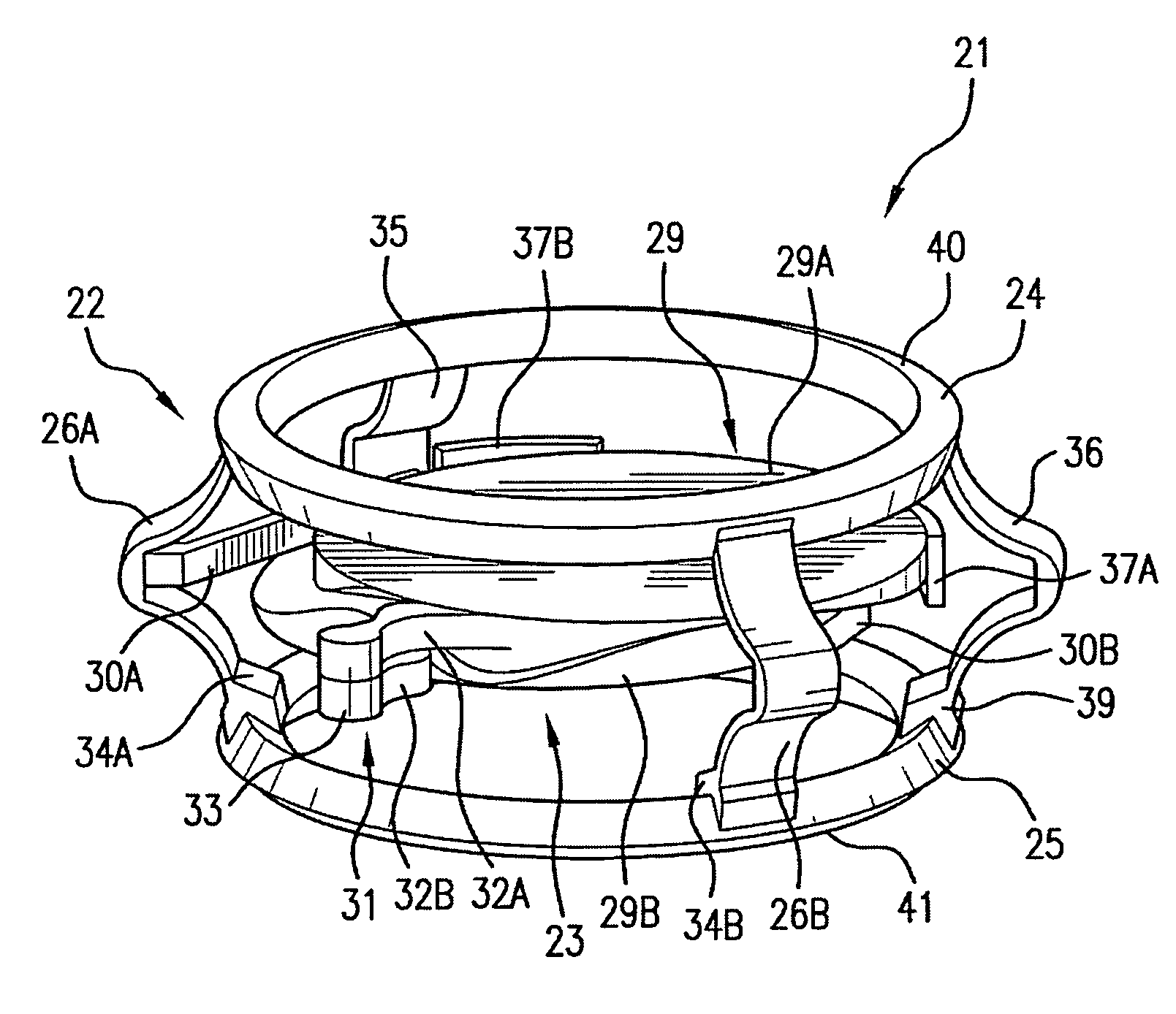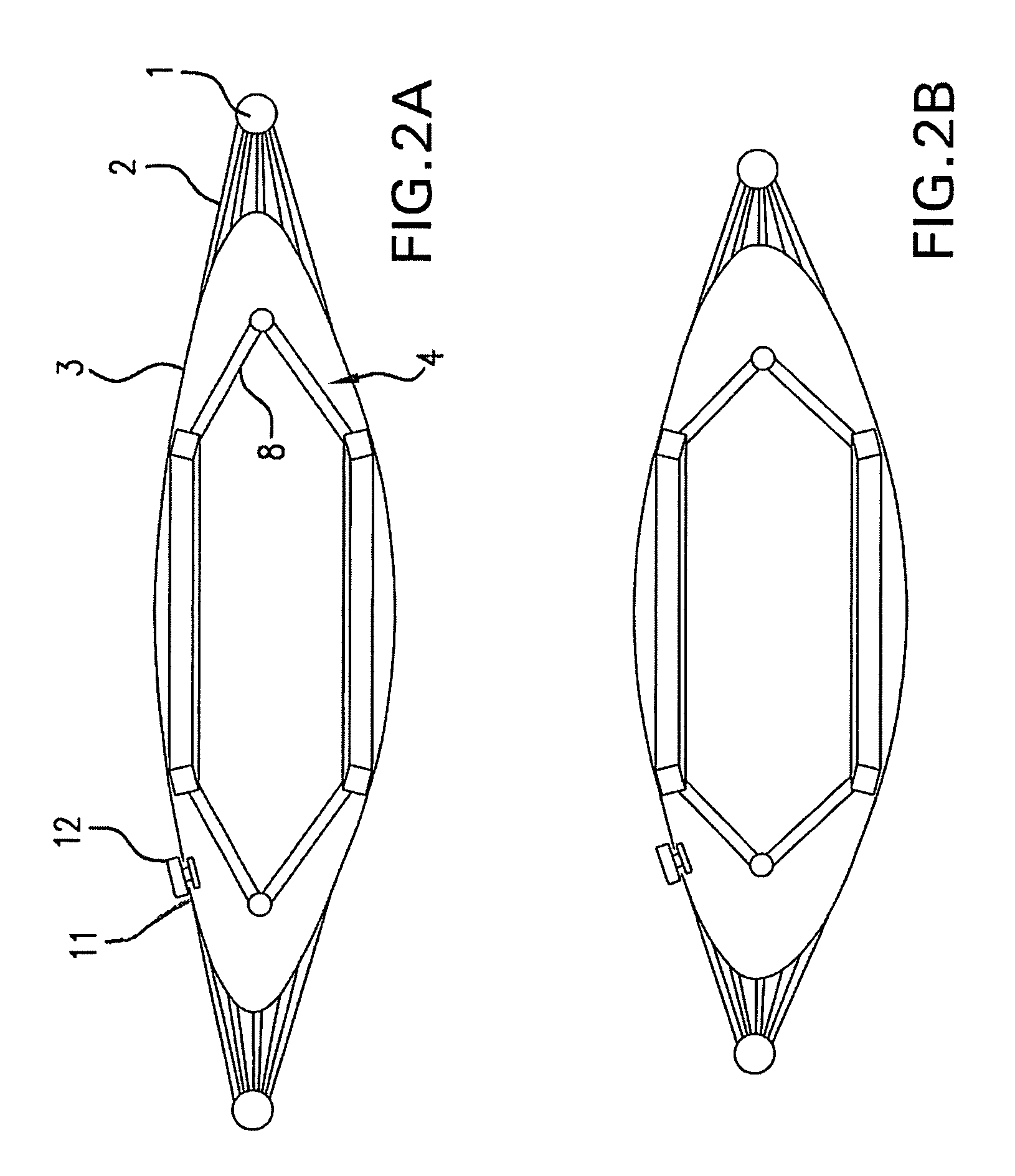Accommodating intraocular lenses and associated systems, frames, and methods
a technology for intraocular lenses and frames, applied in intraocular lenses, prostheses, medical science, etc., can solve the problems of loss of some or substantially all of its resiliency, age-related far-sightedness or presbyopia, and lens types that provide no or at most pseudo-accommodative power, etc., to minimise the total lens thickness, optimise the lens profile, and optimise the effect of optical quality
- Summary
- Abstract
- Description
- Claims
- Application Information
AI Technical Summary
Benefits of technology
Problems solved by technology
Method used
Image
Examples
second embodiment
[0181]In FIGS. 9-12, the frame 22 comprises two resilient connecting elements 26A, 26B, to which the optical system 23 is attached, and two additional resilient elements 34, 35, which are only attached to the anterior and posterior frame elements 24, 25 and to which the optical system 23 is not attached. This embodiment does not comprise haptics. Each lens 29A, 29B of this embodiment is further provided with a stop 37A, 37B, respectively, the function of which will be explained below.
[0182]In the shown embodiment, the joint 33 of the interconnection 31 between the lenses 29A, 29B is formed by a fitting connection between the arms 32A, 32B by a peg 33A of essentially square cross-section in a matching hole 33B.
[0183]The arms 30A, 30B are attached to the connecting elements 26A, 26B in a similar peg-in-hole fashion with a tight fit. This connection may be glued, welded or affixed in any suitable manner if necessary. Thus, the IOL is formed as a kit of parts for facilitating fabricatio...
third embodiment
[0200]FIG. 13 shows an intraocular lens, which is significantly simpler in construction than the previous embodiments.
[0201]The IOL 42 comprises a frame 43 and an optical system 44. The frame 43 comprises two frames halves 43A and 43B, respectively. Each frame half 43A, 43B comprises an anterior frame element 45A, 45B, respectively, and a posterior frame element 46A, 46B, respectively, which are connected by resilient connecting elements 47A, 47B, respectively. The frame halves 43A, 43B may be interconnected by additional elements, e.g. forming a ring or a differently shaped closed rim as in the embodiments discussed before.
[0202]The optical system 44 comprises a compound lens 48, comprising varifocal lenses 48A and 48B, respectively. The lenses 48A, 48B are mutually movable connected through interconnection 49. The joint 50 of the interconnection 49 is shaped as a rotatable hinge 50 but may be of any suitable construction.
[0203]The resilient connecting elements 47A, 47B of the fram...
PUM
 Login to view more
Login to view more Abstract
Description
Claims
Application Information
 Login to view more
Login to view more - R&D Engineer
- R&D Manager
- IP Professional
- Industry Leading Data Capabilities
- Powerful AI technology
- Patent DNA Extraction
Browse by: Latest US Patents, China's latest patents, Technical Efficacy Thesaurus, Application Domain, Technology Topic.
© 2024 PatSnap. All rights reserved.Legal|Privacy policy|Modern Slavery Act Transparency Statement|Sitemap



